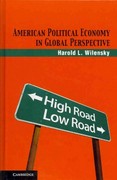Solve..
Figure E.11.1 Banand Labor. banana 20 60 80 Capital 20 60 80 Capital Apple Labor, apple c) Indicate all points in the graph that are both Pareto improvements as compared to a, and are Pareto efficient. An approximate answer is sufficient. d) What is the criterion for Pareto efficient production? What does that correspond to in the figure? What is the "production contract curve"? Draw an approximate production contract curve in the graph. Figure E.11.2 QA 80 60 40 20 QB 20 40 60 80 100 f) In Figure E.1 1.2, we have drawn the two axes for a production transformation curve (production possibilities curve). Use the information from Figure E.11.1 to construct the full curve. g) Suppose we produce in point b in Figure E.1 1.2. That point is not efficient. What is the alternative cost of changing to an efficient production?2.3 Elasticities Exercise 2.3.1 a) State the definitions of price elasticity ( of demand), income elasticity, and cross-price elasticity. What do these definitions mean in words? b) In the graph in Figure E.2.1, DI is the demand for a certain good at different prices. Calculate the price elasticity of the good at point A and point B. Do you get the same answer in both points? Why or why not? c) If the slope of DI would change, so that demand becomes a horizontal line through point A, what would the price elasticity in point A be? d) If income increases by 10 %, DI shifts to D2. Calculate an approximate value for the income elasticity at point A. e) Suppose the price of the good is 5, and that is increases by 5%. As a consequence, the demand of another good decreases by 20 %. Calculate the cross-price elasticity for the other good. Is the other good a substitute good or a complementary good to the first one?E6. A German exporter wants to hedge an outflow of NZD 1m. She decides to hedge the risk with a DEM/USD contract and a DEM/A UD contract. The regression output is, with the t- statistics shown in parentheses, and R2 = 0.59: AS(DEM/AUD] = a + 0.15 AfjDEM/USD] + 0.7 /jDEM/AUD] (1.57) (17.2) (a) How will you hedge if you use both contracts, and if the face value of a USD contract is for USD 50,000 and AUD contract for AUD 75,000? (b) Should you use the USD contract, in view of the low t-statistic? Or should you only use the AUD contract?E3. On the morning of December 6, you purchased a futures contracts for one USD at a rate of BEF/USD 55. The following table gives the subsequent settlement prices and the p.a. bid- ask interest rates on a BEF investment made until December 10th. December 6 7 8 9 10 futures price 56 57 54 52 55 bid-ask interest rates on BEF 12.00-12.25 11.50-11.75 13.00-13.25 13.50-13.75 NA in % (a) What are the daily cash flows from marking to market? (b) What is the total cash flow from marking to market (ignoring discounting)? (c) If you must finance your losses and invest your gains from marking to market, what is the value of the total cash flows on December 10?ME2. By "marking to market a forward contract" we mean "adjusting the forward rate fixed in an old contract to the currently prevailing forward rate" (see also Chapter 4). For instance, an old DEMy2 contract at Fry = BEF/DEM 20.5 would be replaced, at time 71











